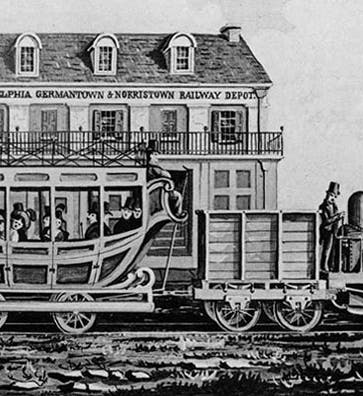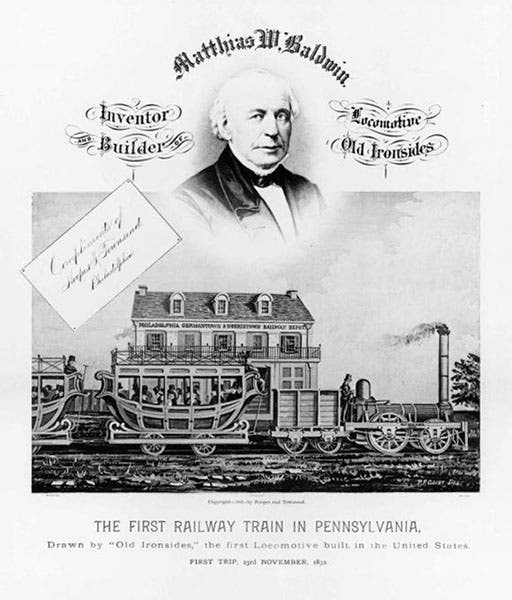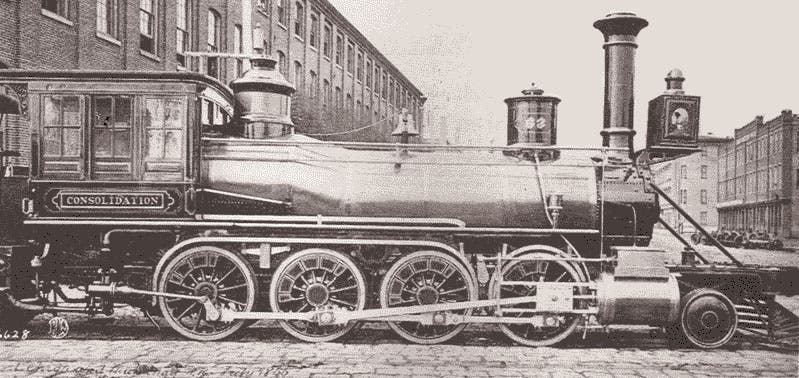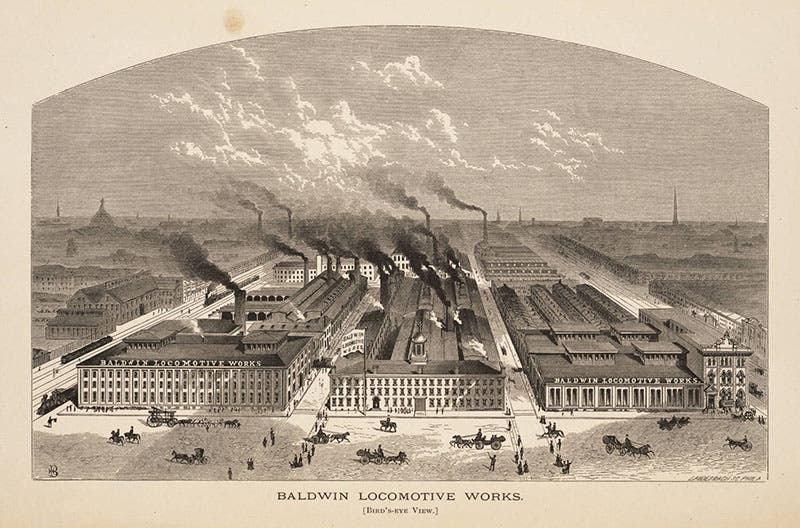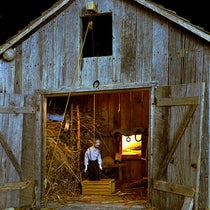Scientist of the Day - Matthias Baldwin
Matthias Baldwin, an American manufacturer, was born Dec. 10, 1795. Baldwin had a machine shop in Philadelphia and produced such goods as stationary steam engines. When the Age of the Railroad began in 1830, the United States did not lag far behind England in laying out track. A slew of new railways snaked out along the Atlantic coast in 1831, and Baldwin was commissioned by the newly founded Philadelphia, Germantown, & Norristown Railroad (PG&N) to build them a locomotive. Baldwin responded with a steam locomotive called Old Ironsides, which was, in railway parlance, a “2-2-0”, meaning that it had a lead axle with 2 wheels, a powered axle with 2 wheels, and no trailing truck. The engine was successful (after some tinkering) and the Baldwin Locomotive Works (BLW) was born. A commemorative poster of 1883 provides us with a nice view of Old Ironsides, its inaugural train, and a PG&N depot, as well as a portrait of Baldwin himself (second image). We use a detail of Old Ironsides from the poster for our opening image.
Another of Baldwin's early locomotives was the Pioneer, a 4-2-0 built in 1837. Originally called the Alert, it served for some years on the Utica and Schenectady Railroad, before being sold, and then sold again, the second time in 1848 to the Galena and Chicago Union Railroad, who renamed it Pioneer. It was the first locomotive to operate in Chicago. The locomotive has been preserved and may be seen in the Chicago History Museum (third image). It rather resembles a praying mantis on wheels, because of its long cowcatcher.
The BLW expanded to become one of the premier suppliers of locomotives in the U.S. for about 90 years. Their locomotives got larger, more complex, and, interestingly, they got much prettier. Baldwin seems to have been one of the pioneers of railway aesthetics, striving for clean lines and classical details around the domes and funnels that decorated the typical early steam locomotive. There is quite a contrast between the Pacific, a 4-4-0 from the 1850s (fourth image), with exceptionally clean and uncluttered surfaces, and the Pioneer of 1837, with its rivets busting out all over (third image).
By the 1860s, Baldwin locomotives had become very large and impressive pieces of machinery. Our fifth image photographs the Consolidation, a 2-8-0 behemoth of 1866. This was the largest locomotive in the United States at the time, some 45 tons of iron and steel. It was posed in front of the BLW factory in downtown Philadelphia.
A later bird’s-eye-view of the factory, from a catalog (ca 1872) in our History of Science Collection, shows the extent of the BLW production facilities (sixth image).
Matthias died in 1866, but Baldwin locomotives continued to dominate the American market for another 60 years. The BLW was a major money pump for the Philadelphia economy for all those years, so it is fitting that there is a statue of Matthias Baldwin in front of the Philadelphia City Hall (seventh image). And a handsome piece of sculpture it is, elegant and well-finished, with fine lines, just like one of his locomotives
Dr. William B. Ashworth, Jr., Consultant for the History of Science, Linda Hall Library and Associate Professor emeritus, Department of History, University of Missouri-Kansas City. Comments or corrections are welcome; please direct to ashworthw@umkc.edu.

